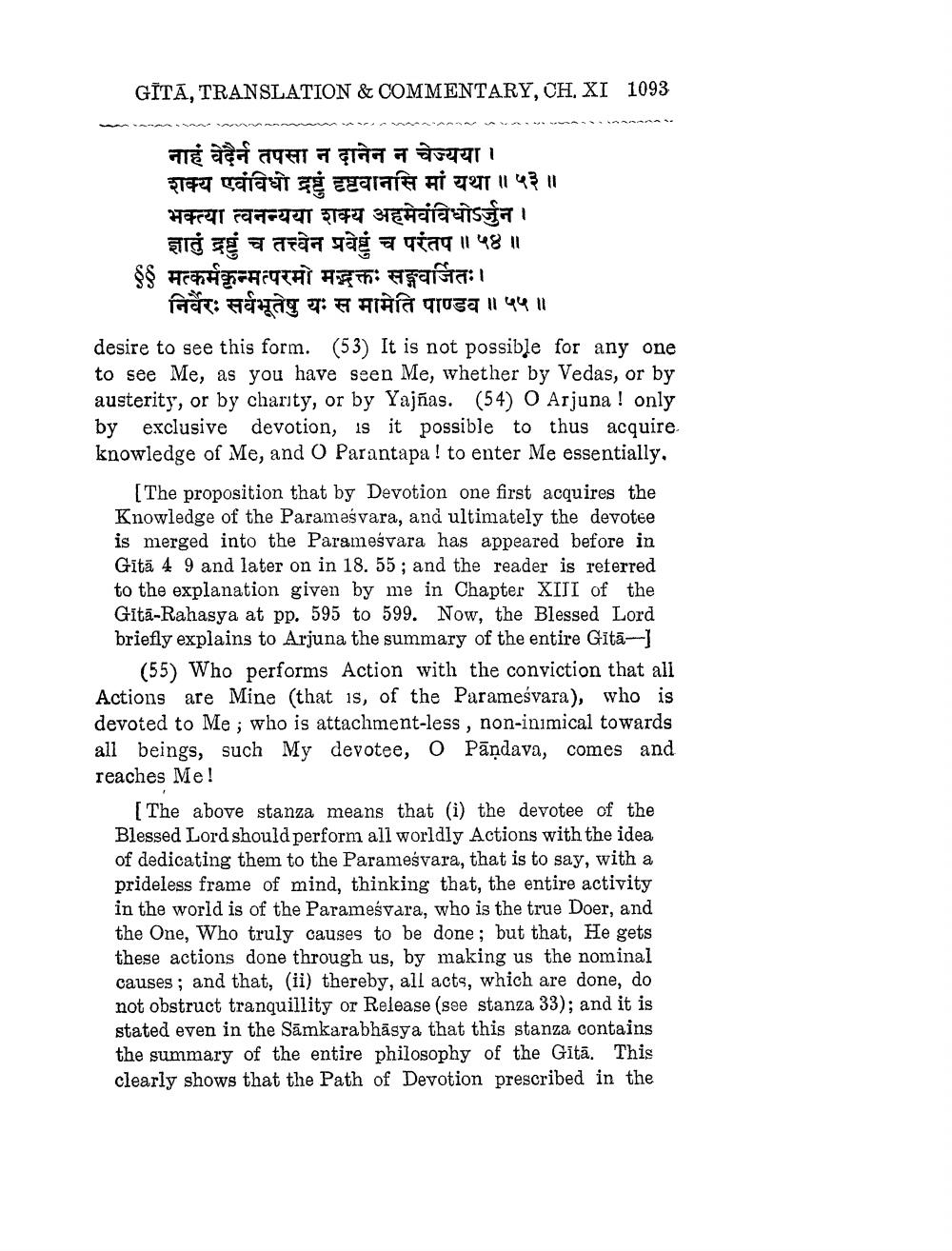________________
GITA, TRANSLATION & COMMENTARY, CH, XI 1093
नाहं वेदैर्न तपसा न दानेन न चेज्यया। शक्य एवंविधो द्रष्टुं दृष्टवानसि मां यथा ॥ ५३॥ भक्त्या त्वनन्यया शक्य अहमेवंविधोऽर्जुन।
ज्ञातुं द्रष्टुं च तत्त्वेन प्रवेष्टुं च परंतप ॥५४॥ $$ मत्कर्मकृन्मत्परमो मद्भक्तः सङ्गवर्जितः।
निर्वैरः सर्वभूतेषु यः स मामेति पाण्डव ॥ ५५ ॥ desire to see this form. (53) It is not possible for any one to see Me, as you have seen Me, whether by Vedas, or by austerity, or by charity, or by Yajñas. (54) O Arjuna ! only by exclusive devotion, is it possible to thus acquire knowledge of Me, and 0 Parantapa ! to enter Me essentially,
[The proposition that by Devotion one first acquires the Knowledge of the Parameśvara, and ultimately the devotee is merged into the Parameśvara has appeared before in Gītā 4 9 and later on in 18. 55; and the reader is referred to the explanation given by me in Chapter XIII of the Gītā-Rahasya at pp. 595 to 599. Now, the Blessed Lord briefly explains to Arjuna the summary of the entire Gitā-
(55) Who performs Action with the conviction that all Actions are Mine (that is, of the Parameśvara), who is devoted to Me ; who is attachment-less, non-inimical towards all beings, such My devotee, O Pāņdava, comes and reaches Me!
[The above stanza means that (i) the devotee of the Blessed Lord should perform all worldly Actions with the idea of dedicating them to the Paramešvara, that is to say, with a prideless frame of mind, thinking that, the entire activity in the world is of the Parameśvara, who is the true Doer, and the One, Who truly causes to be done; but that, He gets these actions done through us, by making us the nominal causes; and that, (ii) thereby, all acts, which are done, do not obstruct tranquillity or Release (see stanza 33); and it is stated even in the Sāmkarabhāsya that this stanza contains the summary of the entire philosophy of the Gitā. This clearly shows that the Path of Devotion prescribed in the




